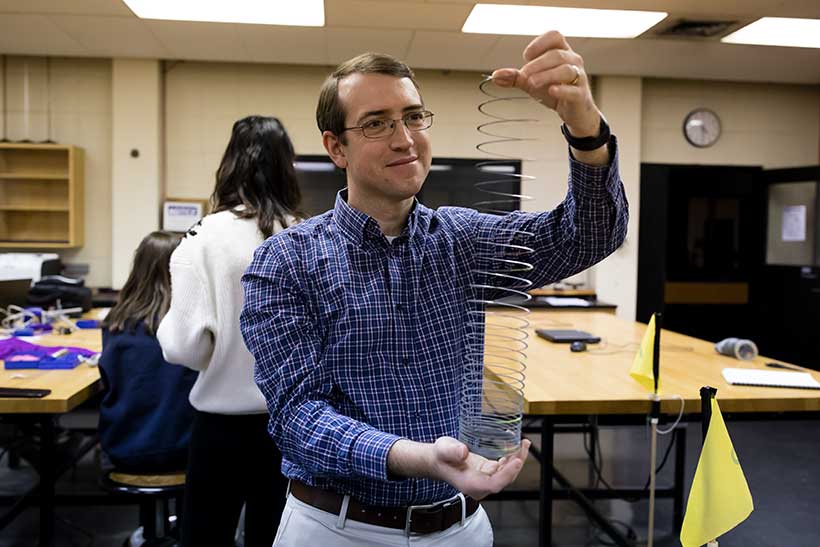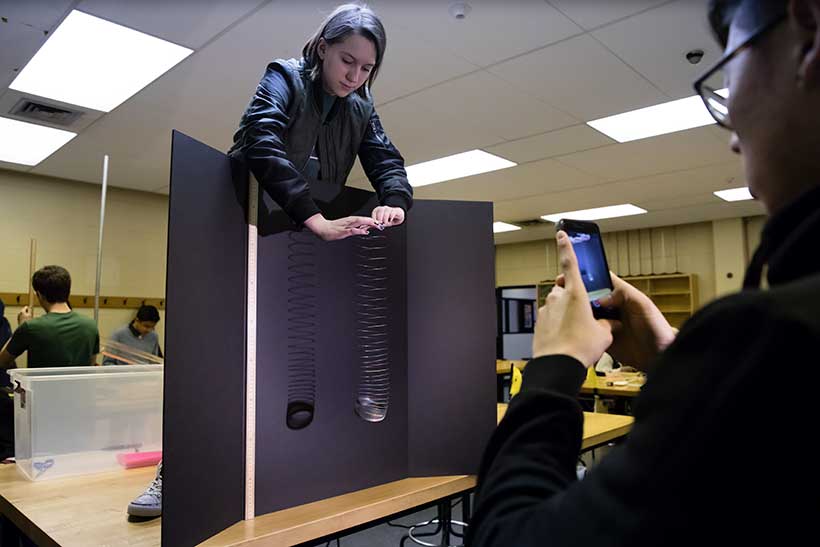
When he’s not using Slinkys, Hanneke’s lab develops quantum control techniques for molecules.
Assistant Professor David Hanneke caps his “Newtonian Synthesis” physics course with a design-your-own adventure project. The aim: for students to experiment with physical laws in action. In groups, first-years and sophomores came up with tests to analyze motion, calculate translational velocity and study momentum and gravity. Here’s what a few of them did.

